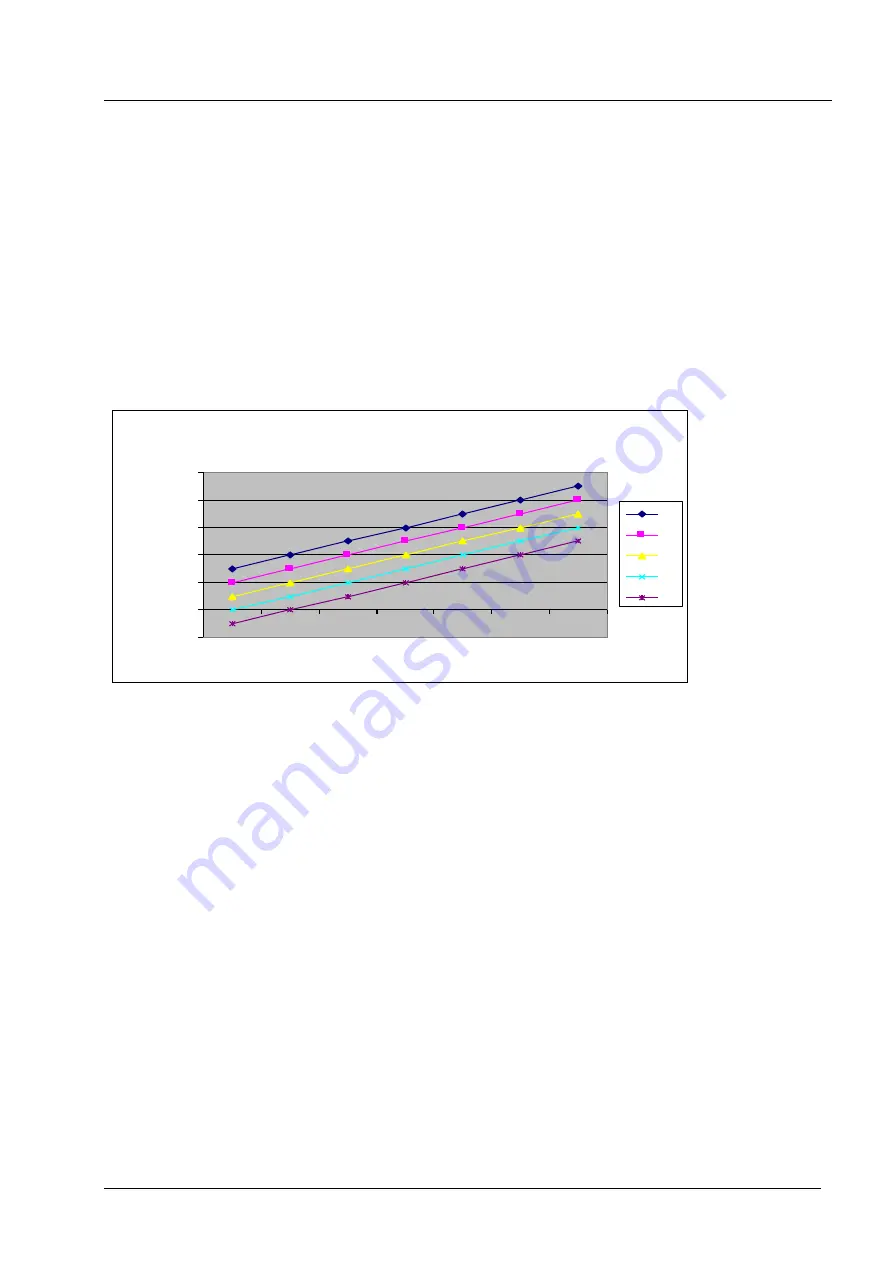
Operating Manual
“Warm N Dry”
www.hvsolutions.com.au
12 of 12
Copyright 2010
Appendix B - Heat Recovery Calculations
The amount of heat or loss that can be contributed to the home is dependant upon the following
factors:
Outside temperature and atmospheric pressure which effects the “Air Density”
Roof temperature (sun and roof structure etc)
House temperature (thermal mass, insulation and other heat sources/losses)
Air flow (fan speed and capacity)
Power (kw) = (Air Flow) X (Air Density) X (Roof Temperature
– House Temperature)
The following graph shows the expected heat gain in kilowatts based on assumptions that the
atmospheric pressure is normal at sea level (1013 mbar), air density is constant @ 1.24 kg/m3)
and that flow rate is 200 l/s which is maximum speed of a single HVS2 fan.
Relative Heat Contribution
-1.00
0.00
1.00
2.00
3.00
4.00
5.00
18
20
22
24
26
28
30
Roof Temperature
ki
lo
w
at
ts
12
14
16
18
20
Each coloured line on the graph represents various house temperatures which determines the
relative heating/cooling effect from the incoming air. If the air temperature in the roof is the same
as inside the house, then obviously there is zero heat gain. If the roof temp is greater than the
inside air then there is a gain. Conversely if the roof air is colder than inside the home then there
is a heat loss.
Graph examples:
If the house temperature is 16 degrees (yellow line) and the Roof Temp is 26 degrees, the
heat gain is 2.5kw (2,500 watts).
If the house temperature is 20 degrees (purple line) and the Roof Temp is 26 degrees, the
heat gain is 1.5kw (1,500 watts)
If the house temperature is 20 degrees (purple line) and the Roof Temp is 18 degrees, the
heat loss is 0.5kw (500 watts)
During condensation control mode (roof temp between 5 and 18), the fan speed is reduced which
reduces the amount of heat loss to as little as 170 watts in the worst case scenario (outside temp
of 3 degrees, inside temp of 12 degrees and roof temp of 5 degrees). Typical night time
condensation control mode of say 8 degrees outside, 12 degrees in the roof and 16 degrees
inside would account for only 100 watts of heat loss (that of a light bulb).
The above does not take into account the significant energy savings resulting from the
drying effect (displacement of moist humid air with dryer fresh air).






























